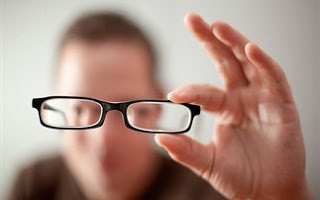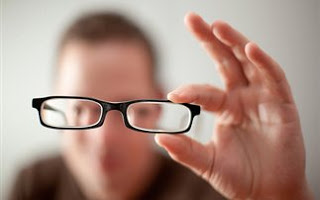Myopia is a refractive error in which light rays from a distant object are focused in front of the retina and not on the retina as in an emmetropic eye.
This is due either to an increase in the anteroposterior axis of the eye (axial myopia) or to an increase in the refractive power of the eye (refractive myopia).
What causes myopia?
We do not know the exact causes of myopia. We have found that axial myopia occurs during the developmental period where we have an increase in the anteroposterior axis of the eye.
It is perceived in the first school years where the child's needs extend to distant vision. Recently, intense close work (PC-reading) is blamed and these are the reasons why in recent years we have seen an increase in myopia even up to the age of 26-27.
Myopia can also occur at an older age due to cataracts, which increase the refractive power of the eye. What the patient notices is that he needs less and less glasses to read.
Diabetes is also responsible for the development of refractive myopia. In premature infants a form of myopia called prematurity myopia can also be observed.
What is degenerative myopia?
Degenerative myopia is that where in addition to the blurred perception of distant objects which is the main symptom of myopia is accompanied by degenerative lesions of the eyelids. These lesions are usually seen in myopia over 6,00 diopters, but sometimes are not related to the degree of myopia.
People with degenerative lesions are more likely to develop retinal detachment, which occurs in 5-8% of people with high myopia.
It is useful for every patient with myopia to have an ophthalmoscopy performed by the ophthalmologist for the possible presence of degenerative lesions.
How is myopia treated?
Myopia is treated with glasses, contact lenses and most recently with refractive surgery.
Over the past 20 years, laser surgery to correct myopia has improved the quality of life of millions of people, freeing them from their dependence on their glasses or contact lenses. Photorefractive keratectomy (PRK) is the first Laser surgery technique applied to correct myopia.
The corneal epithelium is removed after we have first anesthetized it with drops and the Laser is applied on its surface. Then contact lenses are applied for 3-5 days which help in the regeneration of the epithelium.
The most common laser technique today is the LASIK method (Laser in situ keratomileusis). The surgeon lifts a portion of the cornea (flap), applies the Laser and then places the flap in its original position. With this method we have faster restoration of vision.
When Laser Myopia Cannot Be Corrected
Conditions such as keratoconus, severe dry eye, uncontrolled glaucoma, collagen diseases (systemic lupus erythematosus, sarcoidosis, etc.), history of ocular herpes, thin cornea, and taking medications such as steroids and antidepressants.
When is the best time to have myopia surgery?
A basic condition for performing refractive surgery is the stability of myopia for 1-2 years and age older than 18 years.
Source: iator.gr

